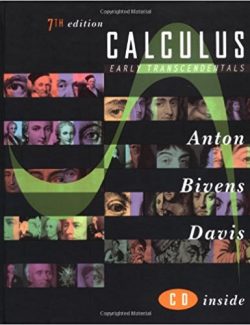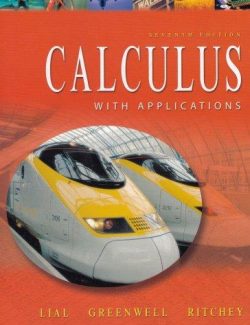Description
Designed for the Calculus I-II-III sequence, the seventh edition continues to evolve to fulfill the needs of a changing market by providing flexible solutions to teaching and learning needs of all kinds.
The new edition retains the strengths of earlier editions–its trademark clarity of exposition, sound mathematics, excellent exercises and examples, and appropriate level–while incorporating new ideas that have withstood the objective scrutiny of many skilled and thoughtful instructors. For the first time, the Seventh Edition is available in both Late Transcendentals and Early Transcendentals versions.
View more













Leave us a comment
No Comments